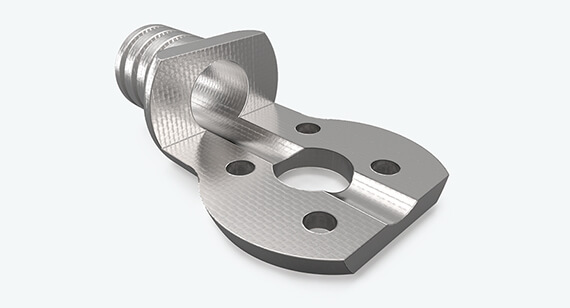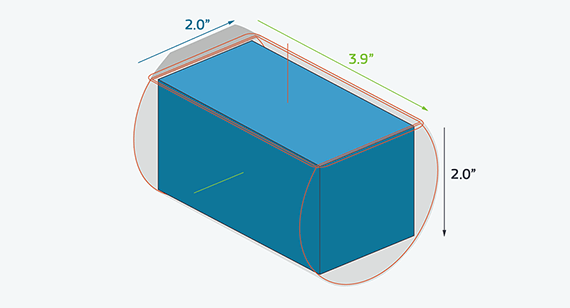15 years one-stop China custom CNC machining parts factory

Hey there I’m VMT Sam!
With 25 years of CNC machining experience we are committed to helping clients overcome 10000 complex part-processing challenges all to contribute to a better life through intelligent manufacturing. Contact us now
 175 |
Published by VMT at Feb 16 2022
175 |
Published by VMT at Feb 16 2022
Fast, cost-effective, and efficient CNC machining Prototype manufacturing and production of CNC machined parts is often a balance between rapidly shifting to CNC machining capabilities and designing optimized CNC machined parts based on those capabilities. So, here are 6 main considerations when designing parts for CNC milling and CNC turning processes that can speed up CNC machined part production time while reducing machining costs.
1. Hole depth and diameter
Holes in most cases are interpolated with end mills, not drilled. This CNC machining method offers great flexibility in hole size for a given tool and provides a better surface finish than a drill. It also allows us to CNC machine grooves and cavities with the same tool, reducing cycle time and CNC machined part costs. The only downside is that due to the limited length of the end mill, holes deeper than six diameters become a challenge and may need to be machined from both sides of the CNC machined part.
2. Size and type of thread
Drilling and thread making go hand in hand. Many manufacturers of CNC machined parts use a "tap" to cut internal threads. The tap looks like a toothed screw and "screws" into the hole previously drilled. A more modern method of making threads, tools called thread mills are used to insert thread profiles. This creates precise threads, and any thread size (threads per inch) that shares that pitch can be cut with a single CNC milling tool, saving production and installation time. Therefore, UNC and UNF threads from #2 to 1/2 inch and metric threads from M2 to M12 can all be used in a single tool set.
3. Text on CNC machined parts
Need a part number, description or logo engraved on a CNC machined part? Laser engraving can meet most CNC plus part text needs, provided that the spacing between individual characters and the strokes used to "write" them is at least 0.020 inches (0.5 mm). Also, the text should be concave rather than raised, and a 20 point or larger font such as Arial, Verdana or similar sans serif is recommended.
4. Wall height and specific width
Many cutting tools are composed of carbide cutting tools. This ultra-rigid material provides maximum CNC tool life and productivity with minimal deflection values. Even the toughest CNC machining tools can deform, as do metals and especially plastics being machined. Therefore, the wall height and specific dimensions depend on the geometry of the individual CNC machined parts and the CNC machining toolset used. For example, a minimum feature thickness of 0.020" (0.5mm) and a maximum feature depth of 2" (51mm) are suitable for machining, but that doesn't mean you can design a finned heat sink with these dimensions.
5. Power tool lathe
In addition to our extensive CNC milling capabilities, we also offer live tool CNC turning. The tool sets used on these machines are similar to those on our machining centers, except we don't turn plastic parts right now. This means that eccentric holes, grooves, flats and other features can be machined parallel or perpendicular (axial or radial) to the "long axis" of the CNC turned part (its Z-axis), and usually follows the orthogonality of the ones fabricated on the machining center The same design rules for the parts. The difference here is the shape of the raw material, not the tool set itself. CNC-turned parts such as shafts and pistons start out round, while CNC-milled parts such as manifolds, gauge boxes and valve covers are often not, using square or rectangular blocks instead.

(The CNC machined parts shown here were made on a CNC lathe with power tools)
6. Multi-axis CNC milling
Using 3-axis CNC machining, the workpiece is clamped from the bottom of the raw stock blank while all CNC machined part features are cut from up to 6 orthogonal sides. Part size is larger than 10"*7" (254mm*178mm), only top and bottom can be machined, no side setting! However, with five-axis CNC machining index milling, CNC machining can be performed from any number of non-orthogonal edges.

Ready To Start Your Next Project?
Get Instant Quote

Request a Free Quote
Send us a message if you have any questions or request a quote. We will get back to you ASAP!